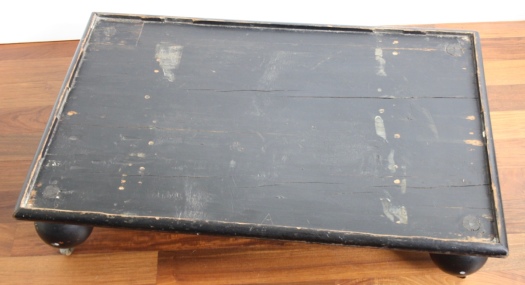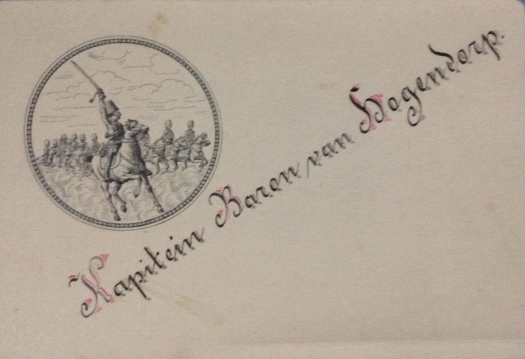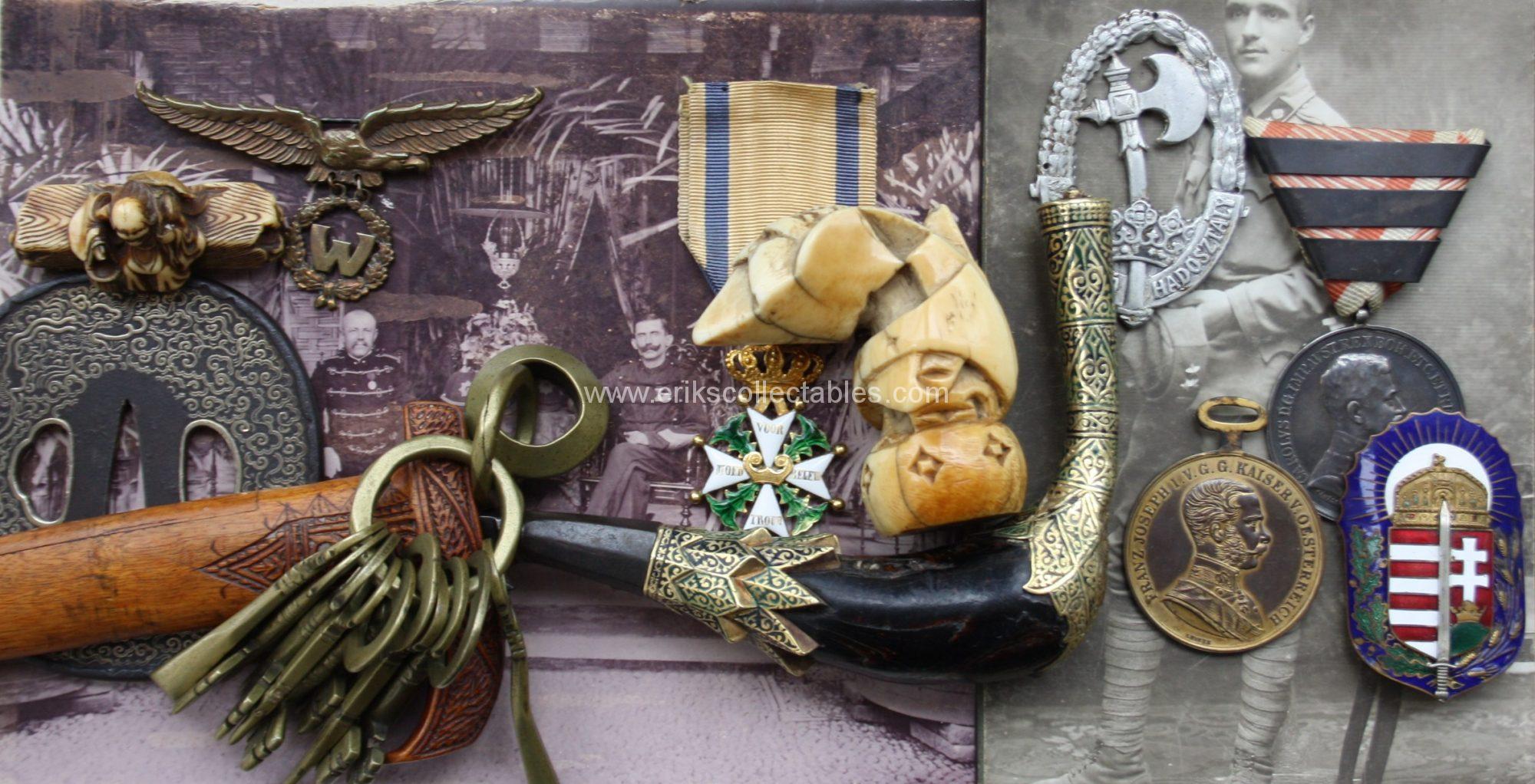Colonial chests
Those who travelled to the Dutch East Indies and had enough money and private space on board often had a private chest made in that region to transport their most precious belongings.
The form, decoration and size would depend on both period (fashion/style) and the owners taste. Most often this would be the captain or a high ranking officer of the vessel. Most vessels traveling to the East Indies in the 18th century would be owned by either the VOC, the United (Dutch) East Indies (trading) Company, or the Dutch navy. Hence the common name for such chests are either VOC/Compagnies chest or Captains’ chest. In later periods the ships became larger and more people could bring on freight items leading to more and simpler variations of chests in the later 19th and 20th century.
This is an example of such a chest from the end of the 18th or early 19th century with some special variations that make it a rare example of an already rare item. Also the provenance is of interest.

The chest itself is made of tropical hardwood with brass fittings as is usual. This type of wood was called Djati in the East Indies and nowadays is more commonly described as teak. The brass fittings are interesting as all parts end in a stylized Fleur de Lys – the French national symbol. This is not a common treat on such chests. This seems to have been in fashion in the ruling classes in the Netherlands only by the end of the 18th and very early 19th century. The period from 1795 up to 1815 (Waterloo) in which the Netherlands were occupied and ruled by the French. We will come back to that a bit later as we come to the provenance. So far I have only found one similar example in the collection of the Kennemerland museum. This also comes from a noble Dutch family and is dated there as 1790 – 1800.

The second interesting part of the chest is the lid side of the lock plate. The top is in the form of a crown. Although crowns are often only seen as the headdress of kings and their likes in heraldry they are a sign of the rank of nobility. In this case not a Kings crown but that of a Dutch Earl (graaf) with a stylized Fleur de Lys in the middle and two halves on the outsides with pearls in between.


I have not been able to find any other chests with such a feature yet. These crowns in their various forms are often applied to other personal items from plates to swords, rings and clothing.
Many of such Captains’ chests are in Museum collections and there is also an antiques dealer in Utrecht that has sold quite a few of these over the years, also several Auction houses sold such chests. They together function as my reference base for this limited research (I have not found any other good reference sources yet).
Now to a third interesting part, the base. This is different than most which either do not have one or if the have it is an integral part of the chest. In this case it is a loose table with standup sidings on which the chest can be placed. This base is made of (tropical?) wood that has been colored black to make it look like ebony. The base again has brass wheels that were only added in the early 20th century when it stood in the hall of the families country house in Vorden.

The brass fittings of the chest run over the entire underside like they do on the top and all sides are also covered by the fittings which is not standard on most chests either. It protects the chest very well when handled more roughly. A last interesting feature can be seen on both sides of the chest. It has an additional brass fitting that stops the lid around the 90 degree angle, it can not go further than that which prevents it from damage or even breaking the lid. The handles to lift the chest are well made and also have a Fleur de Lys decoration. They are also designed to stop at a 90 degree angle as a safety device for the hands.
Provenance Van Hogendorp noble family.
The Van Hogendorp family has a history that traces back to the 16 century where the first traceable member was counselor in the High Council of Holland. Many family member held important positions both in civilian as in military and naval careers. The family entered nobility during the French reign as Comte de L’Empire (equivalent of Earl or in Dutch Graaf) and a little bit later into the Dutch nobility as well with both Earl and Baron as titles. Some family members had important civilian ranks (Regent of Buitenzorg e.g.) in the East Indies both under French and Dutch royal ruling. Later in the 19th century family members had important careers in the Dutch navy achieving even the rank of admiral and receiving the Military Order of William. It now comes from the estate of a Baron van Hogendorp, a high ranking officer in the Dutch army and from a longer line of Dutch officers.

So far within, the Van Hogendorp family, there seems to be only one likely candidate as the original owner of the chest, Dirk van Hogendorp:




